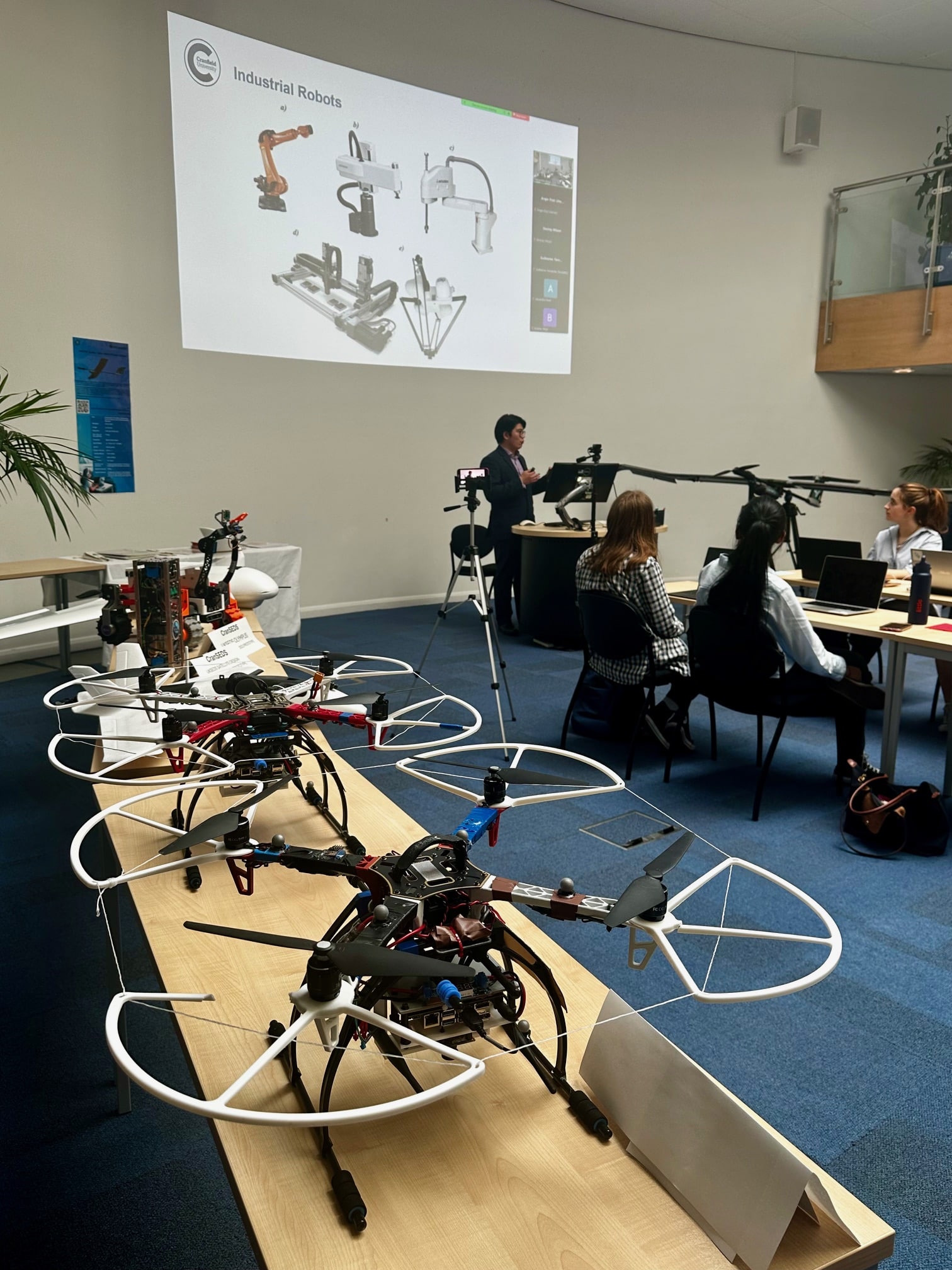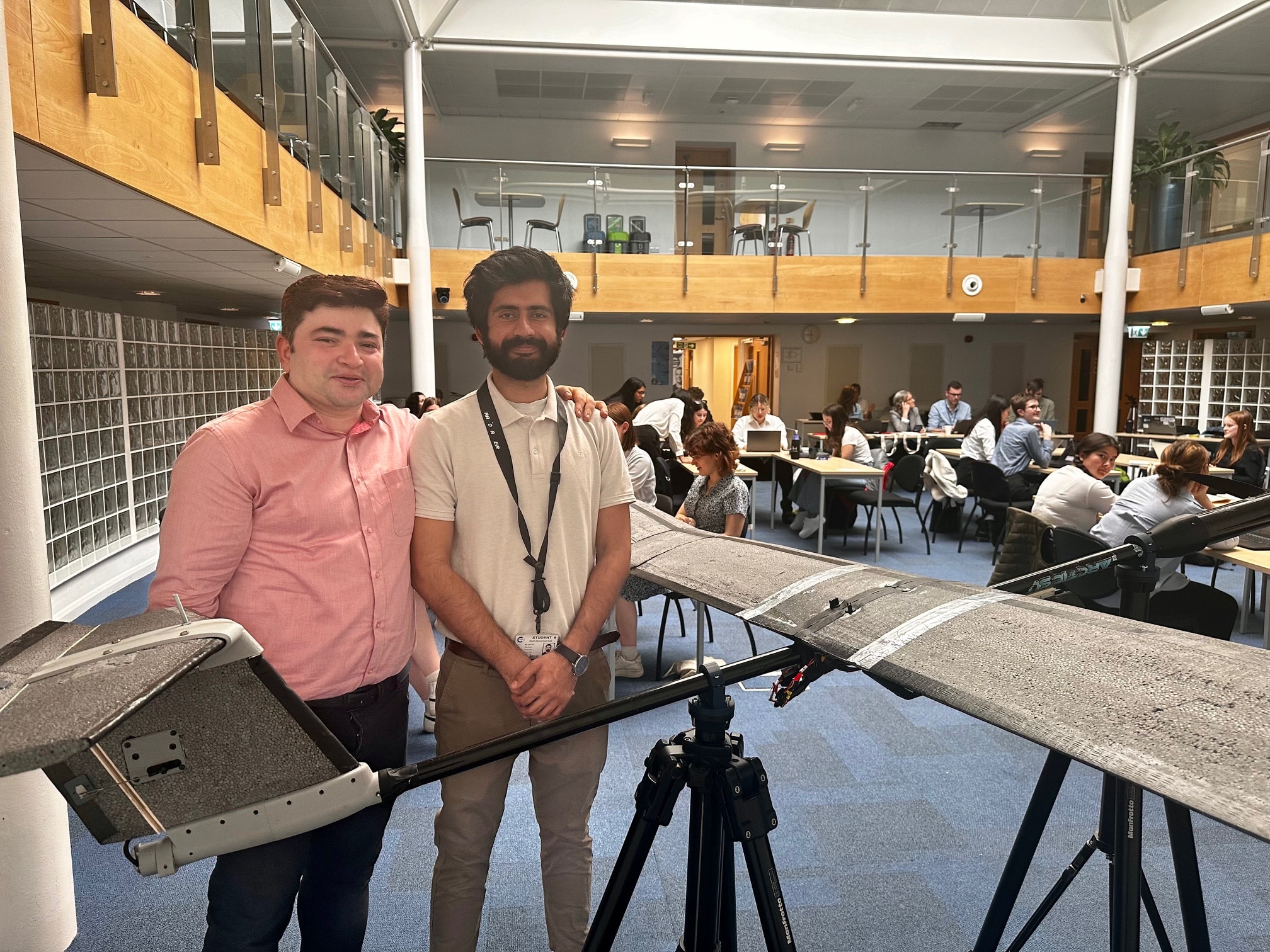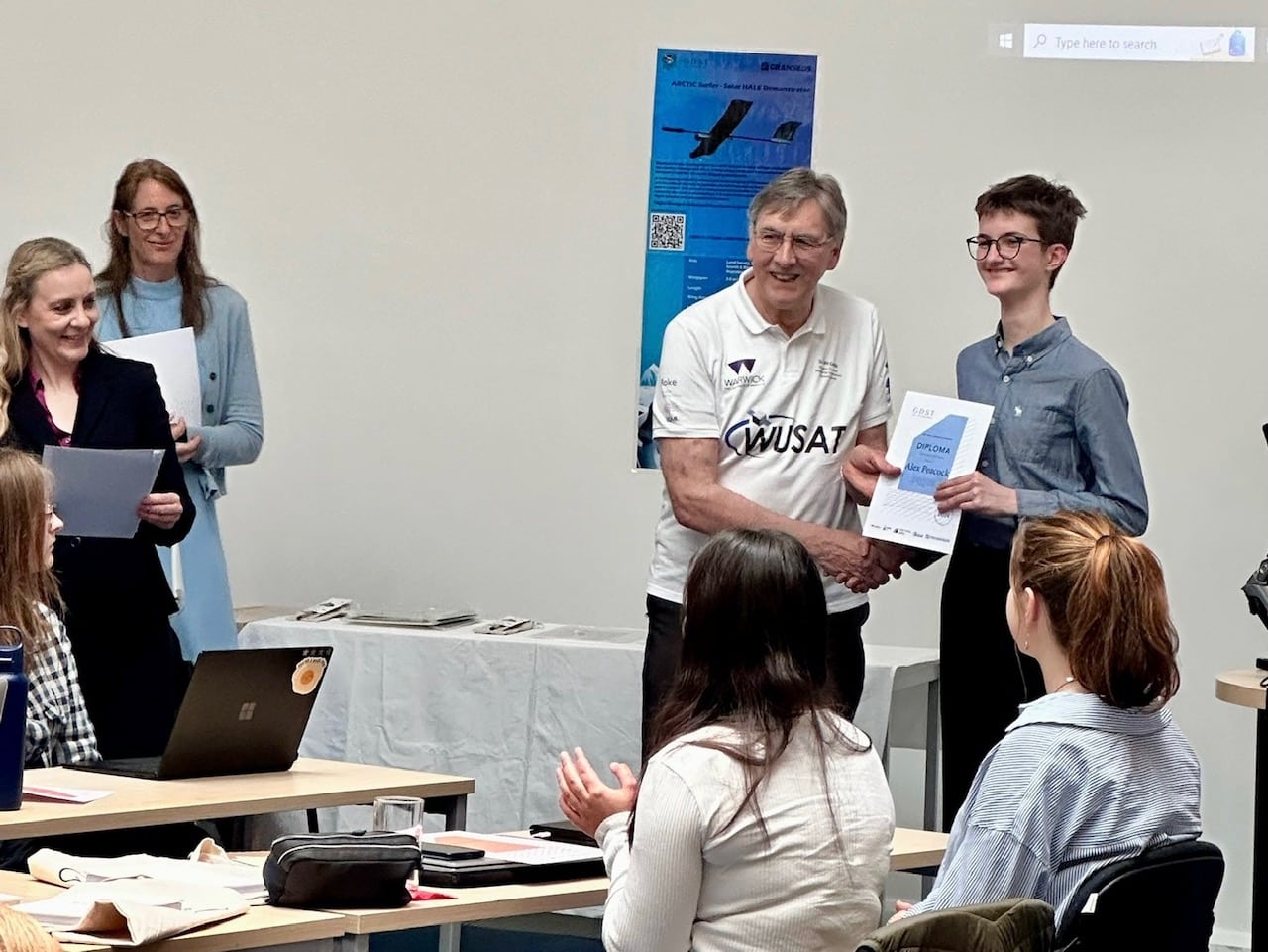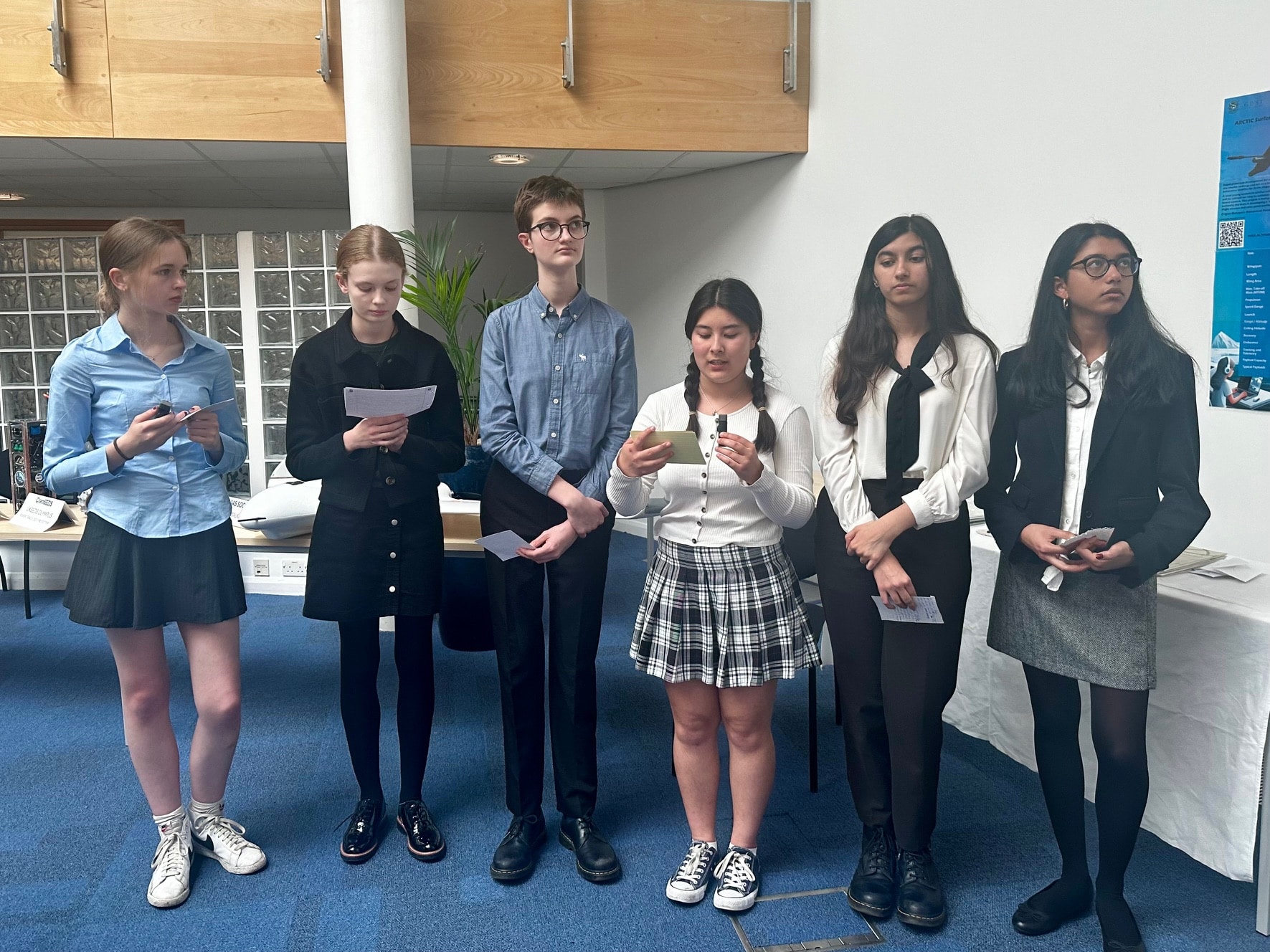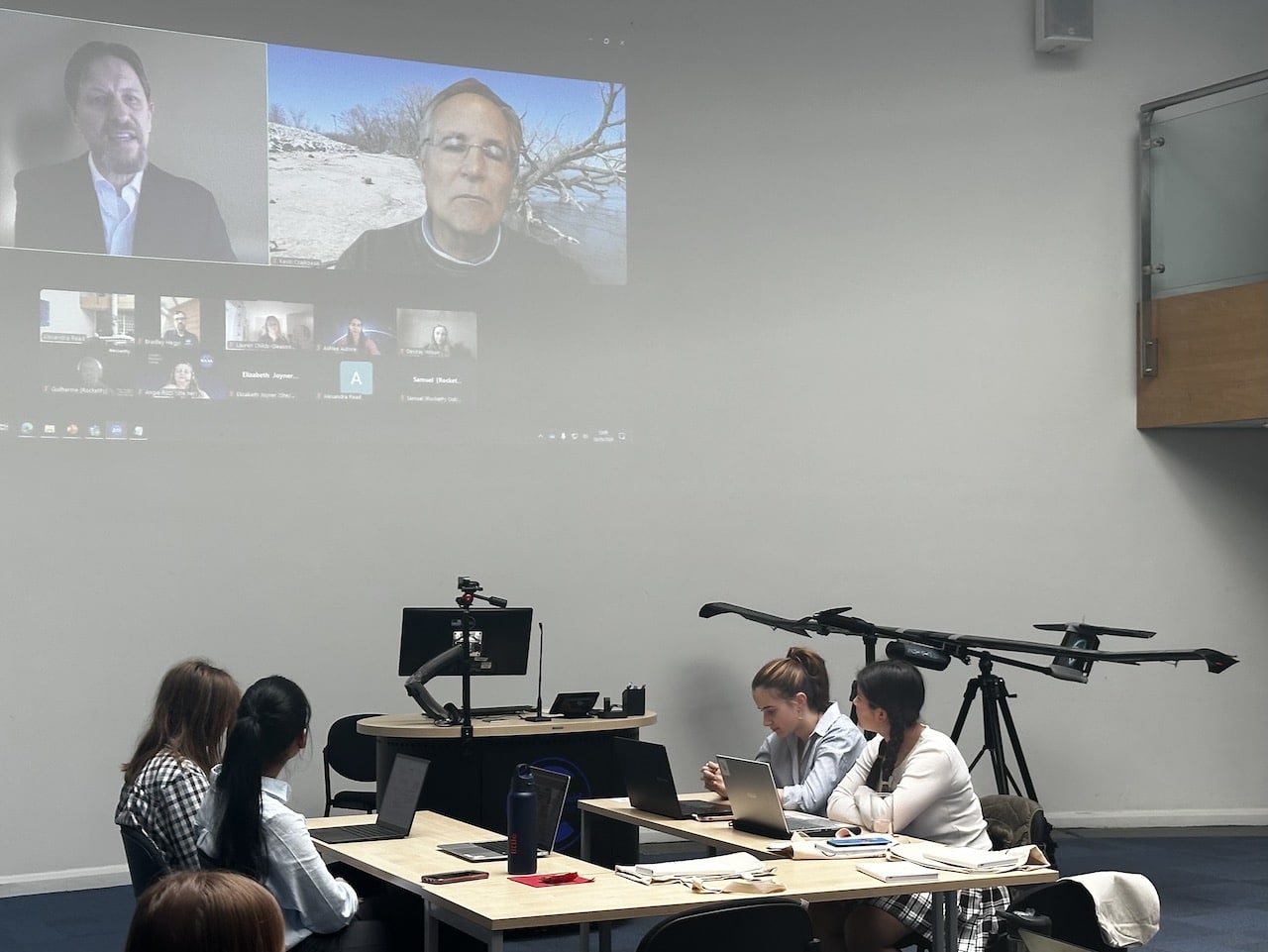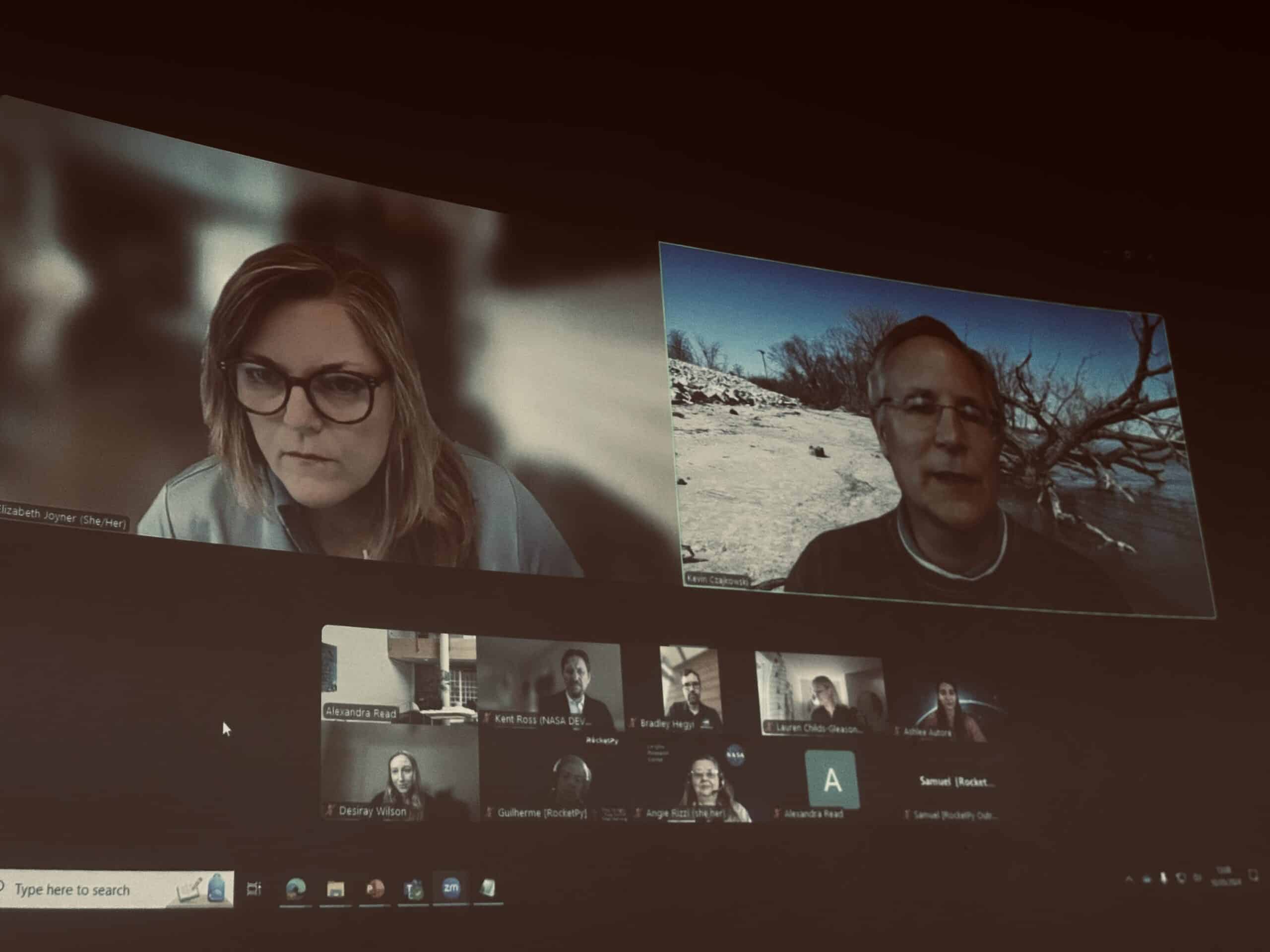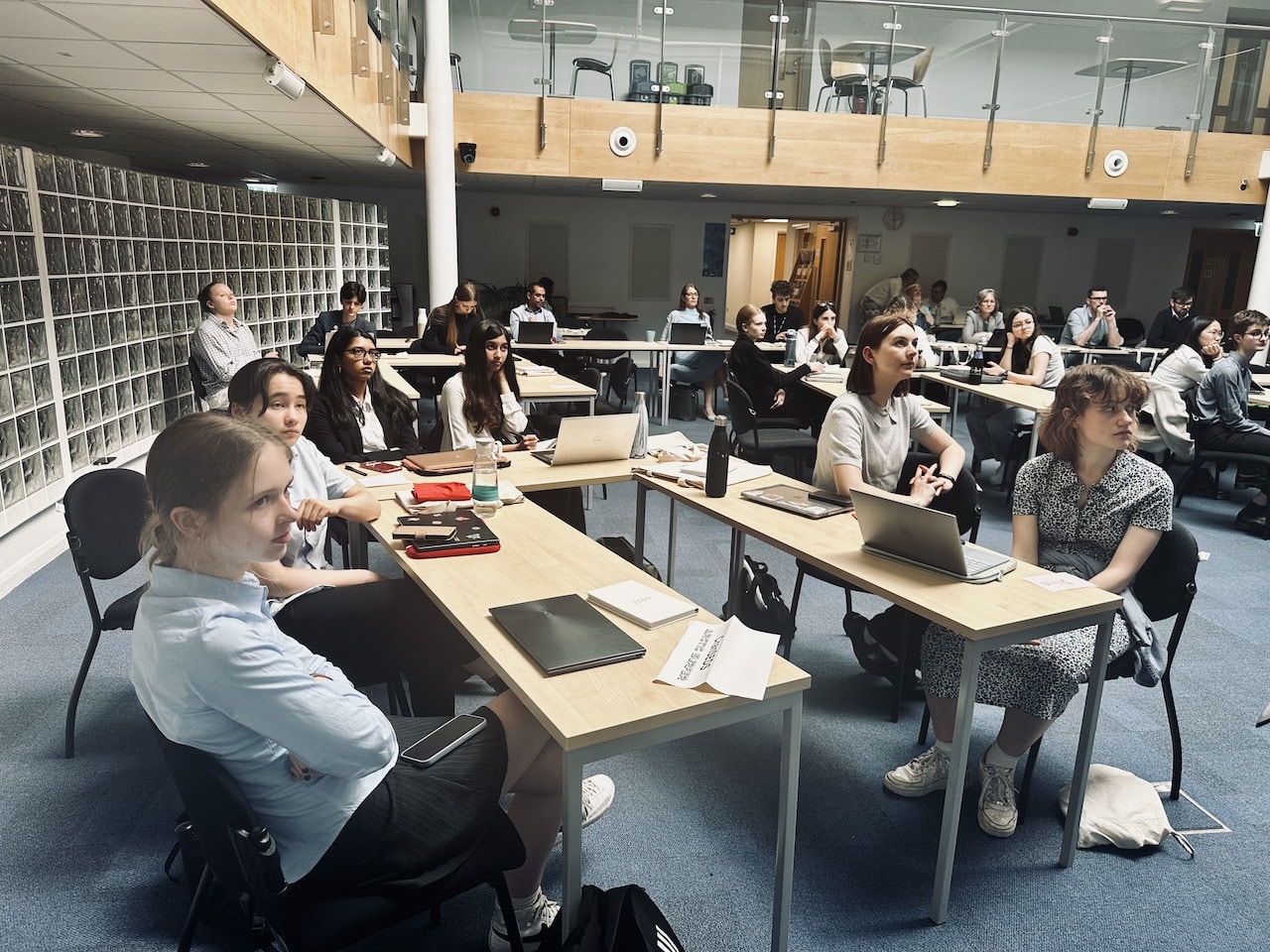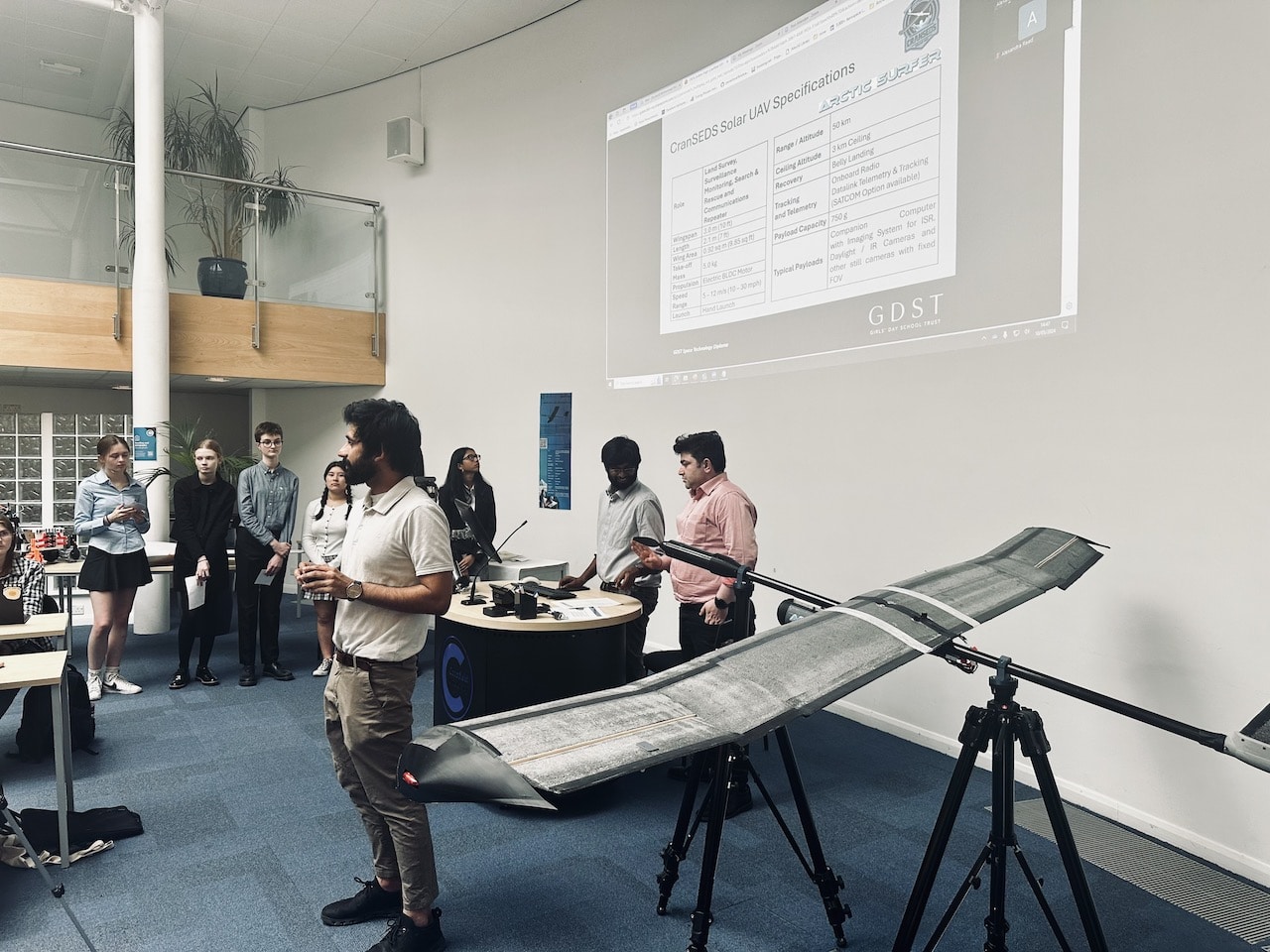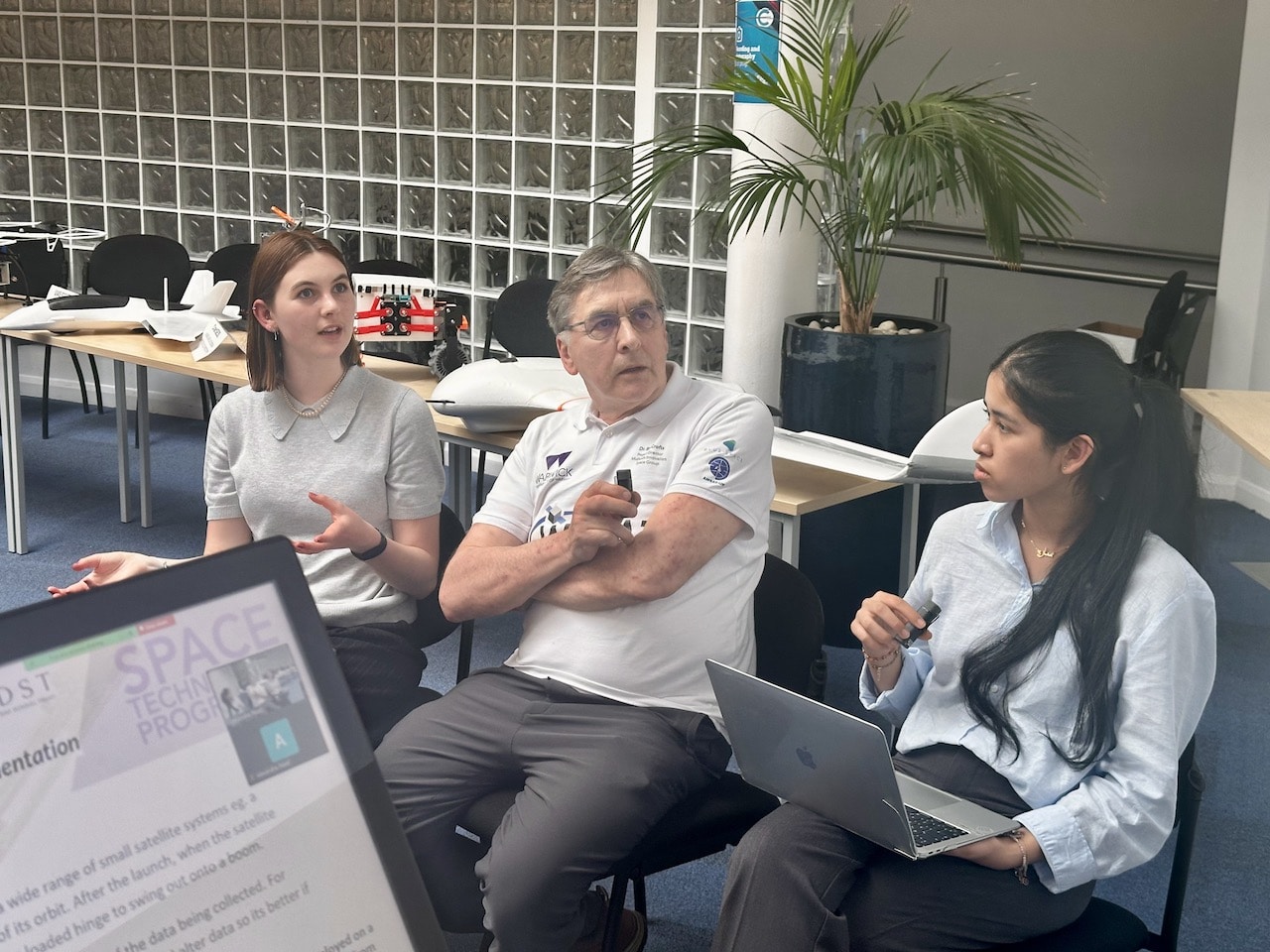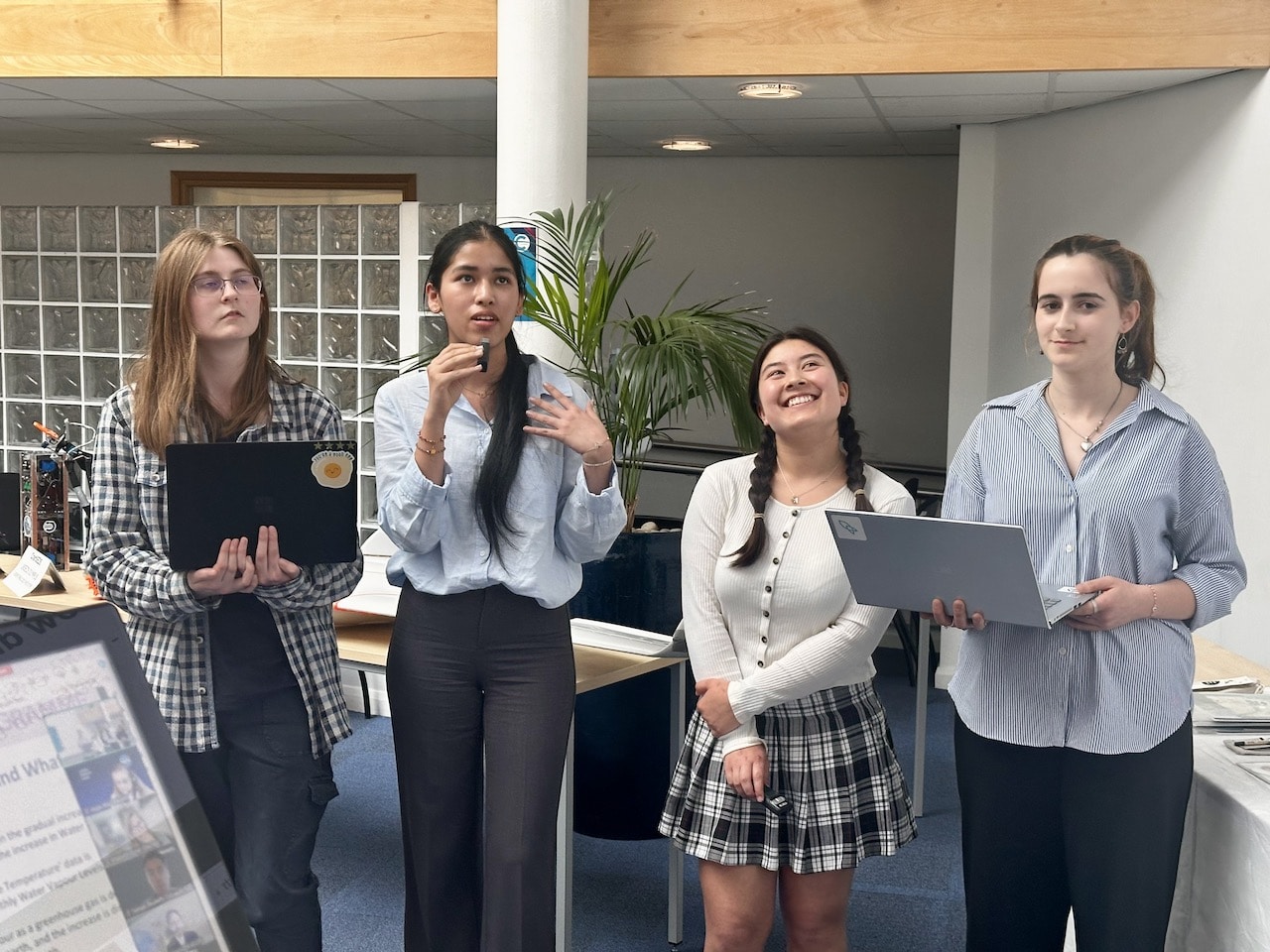Many congratulations to Sutton High School’s Space Technology Diploma candidates, Year 12 students Alex P, Alicia O, Eliza G, Bethany W, and Year 11 students Parissa A, Hayley L, and Juliette S, who have defended their programming portfolios and been granted their 2024 diploma credentials this term. GDST-wide diploma candidates traveled to Cranfield University last Friday to take part in the GDST Space Technology Programme end-of-year student conference at the university’s CMRI Gallery, co-hosted by the university’s CranSEDs (Cranfield Exploration and Development of Space) Team. Students were provided with an extraordinary opportunity on the day, to beta-test a new NASA MND student software tool interface for retrieving satellite data sets for machine learning AI processing, during a task assisted by Sutton High Space Tech Alumni Mentors Farah R and Priya C. In the afternoon, students were treated to additional industry talks on the themes of software development in Earth science and robotics, model rocket optimisation, and spacecraft orientation.
We extend our sincerest gratitude to the virtual panel of space industry professionals, to whom our GDST students presented their practical viva assessment efforts that day: Elizabeth Joyner (NASA Earth Science Data Systems), Angela Rizzi, Desiray Wilson, and Ashlee Autore (My NASA Data), Dr. Kevin Czajkowski (GLOBE Mission Earth), Dr. Brad Hegyi (NASA POWER), Lauren Childs-Gleason (NASA DRCS), Kenton Ross (NASA DEVELOP), and Samuel Nascimento de Melo Santos (RocketPy), as well as guest speakers Gilbert Tang (Cranfield University), Slesa Adhikari (NASA IMPACT), Guilherme Fernandes Alves (RocketPy), Syed Shane Raza Abidi (Cranfield CranSEDS), and Dr. Bill Crofts (Warwick University WUSAT).
The conference event also provided a valuable opportunity for our Sutton High Royal Society STEM Partnership student team to showcase their 2024 airborne imager extension project. This project involves integrating the team’s recent high-altitude balloon and model rocket imager payload (automated remote camera) with a solar-powered UAV drone aircraft. Design and optimisation of the aircraft have been achieved this year using Python GPkit, an engineering software tool first created at MIT by Dr. Warren Hoburg, now a NASA astronaut. GPkit has been introduced as a new programming curriculum component on the GDST Space Technology Diploma, following collaborative efforts to explore coded methods for calculating sustained flight and powering of the small aircraft build, led by our school’s Royal Society STEM industry engineering partners Syed Shane Raza Abidi and Muhammad Haad Shaikh from Cranfield University. Our collaborative extension project is set to be presented at the 2024 Royal Society Summer Science Exhibition Young Researcher Zone this July.
What is the A level extension Space Technology Diploma?
The GDST Space Technology Diploma is an advanced, A Level computer science curriculum extension offering for GDST school students with GCSE Yr 11 Computer Science Python Programming ability (or equivalent). Further information is available from the Sutton High School Computer Science department, and the programme will also be promoted at the school’s Open Evening event this June.
What do students study on the Space Technology Diploma?
A notable requirement of the GDST Space Technology Diploma is each individual student’s Python programming portfolio. The student portfolio evidences their practical work delivered during the course of the year and is evaluated by a guest panel, in conjunction with a live practical task and viva assessment. The guest panel is made up of space industry professionals, who at different stages during the year have typically delivered resources or online presentations to the diploma cohort. The portfolio document also aims to double as an interview tool, presenting skills developed during the scope of the programme, and containing samples of tutorial codes, visualisations and data interpretive explanations by the student.
What do Space Technology Diploma portfolio tasks entail?
Prescribed portfolio tasks cover project briefs such as remote data collection and transmission, predictive processing and visualisation of remote data, physical computing sensor robotics, computer vision, reduced deep space 2D array image and telemetry generation, and airborne device design simulations. Students opting for the distinction level certificate also have the opportunity to explore extended programming tasks using advanced software tools.
Supporting guest speakers participating in lectures to date have visited from institutions such as Warwick University Satellite Programme and NASA Langley Research Center, and have addressed topics such as spacecraft orientation, reaction wheels and Nadir sensing for orbiting satellites, to name a few.

